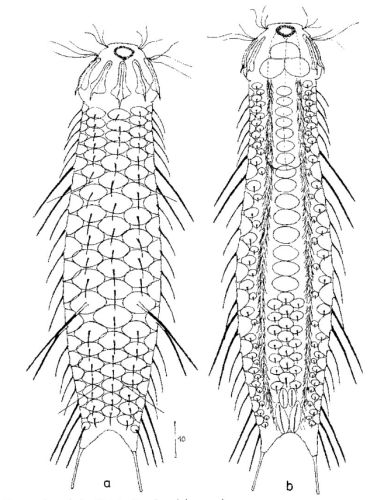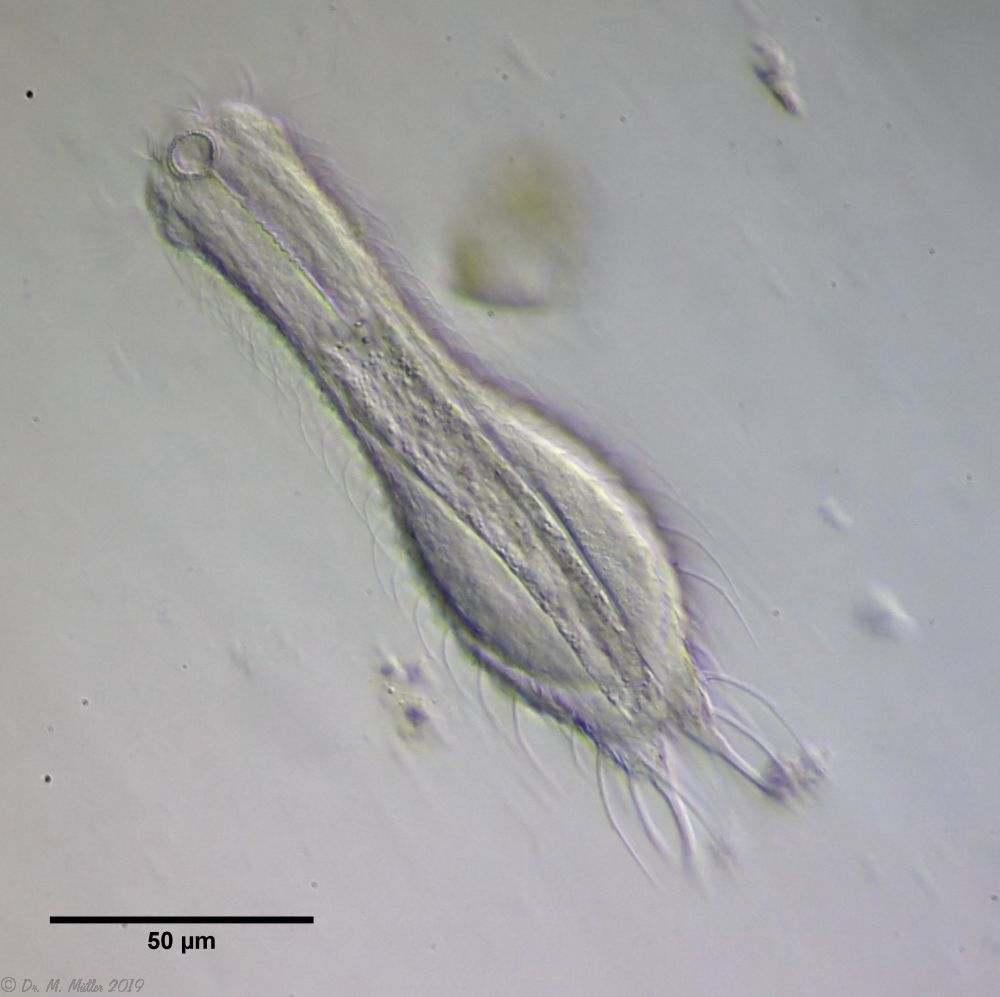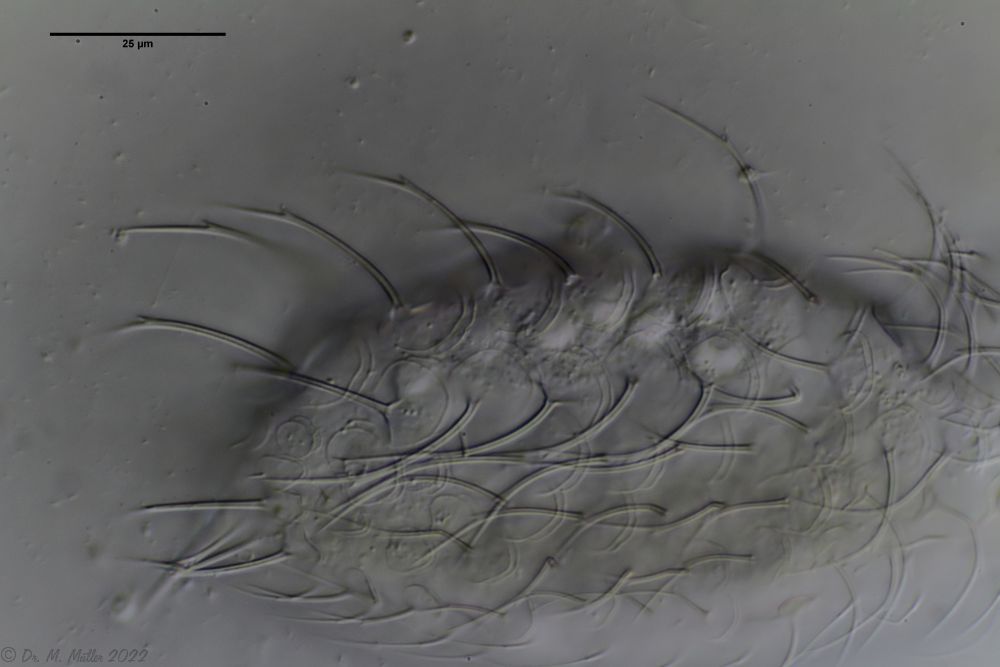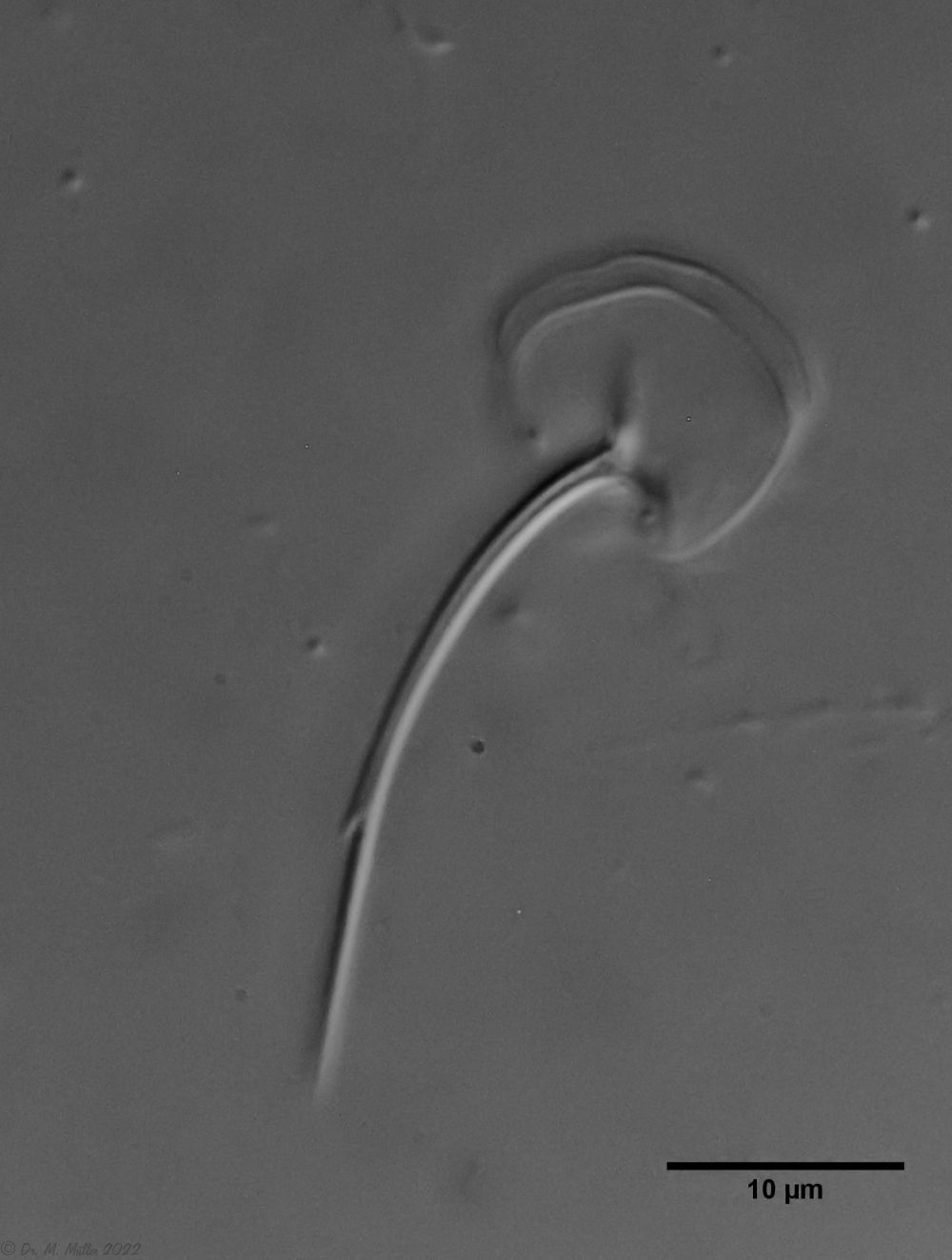Chaetonotus (P. ) cordiformis

190 µm - 225 µm
Width:
30 µm - 54 µm
Width of the head ( five-lobed ):
30 µm - 32.5 µm
Width of the neck:
20 µm - 21 µm
Length of the furca:
30 µm - 31 µm
Adhessive tubes:
75% of furca
Pharyx ( terminal slightly swollen ):
31 µm - 40 µm
Diameter of the mouth ( around ):
unknown
Dorsal scales:
7 rows of fe 20 thin, transverse-oval to obovate scales, only slightly touching each other; spines (10-39 µm) originate slightly behind scale center; secondary tip relatively far from distal end; three pairs of long lateral spines (34-46 µm) overhang toes by twice their length; between toes 3 dorsal spines slightly overhanging toes
Ventral scales:
Ventral intermediate field with +11 rows of short spiny tiny scales
Oecology:
Bog waters, among fallen leaves; common
Similar species:
C. (P. ) heideri : Spines are bent;
Particularities:
brood care: decorating the eggs with detritus; var. bernensis has no secondary tips
Ch. cordiformis shows in cross section the typical structure of limnic gastrotrichs. Remarkable are the relatively few, long and strongly curved scale spines:
 Ch. cordiformis: cross section
Ch. cordiformis: cross section
The side view shows the enormous length of the spines which are provided with a secondary tip:
Lateral view(ChCordiformis2.jpg) Ch. cordiformis: side view
These long spines make it very difficult to take good photos of the animals, because pinning them down with the coverslip strongly disturbs the natural arrangement of the spines. Therefore, an attempt should be made to capture the appearance of the animals free-swimming:
 Ch. cordiformis: free swimming specimen with focus on the scale spines
Ch. cordiformis: free swimming specimen with focus on the scale spines
High resolution images are only possible with somewhat pressed specimens. Only here the roundish scale shape with the scale spines provided with a secondary tip becomes visible. The secondary tip sits relatively far away from the spine end of the animals.
 Ch. cordiformis: spiny scales with secondary tip.
Ch. cordiformis: spiny scales with secondary tip.
Many of the specimens found had peculiar spherical bodies inside, which I think are (permanent forms? of) parasites:
 Ch. cordiformis: spherical inclusions.
Ch. cordiformis: spherical inclusions.
The scales of the animals can be judged well only after they are detached. Here you can recognize the name-giving “heart shape” of the roundish scales with an indentation:
 Ch. cordiformis: heart-shaped scales
Ch. cordiformis: heart-shaped scales
Ch. cordiformis is one of the few gastrotrichs that performs a kind of “brood care” after egg laying. After oviposition, the mother transports detritus from the vicinity of the oviposition site in her pharynx to the egg and sticks this material to the eggshell. As a result, the eggs are completely covered by detritus and protected by it from enemies:

Ch. cordiformis: brood care - start movie by clicking.